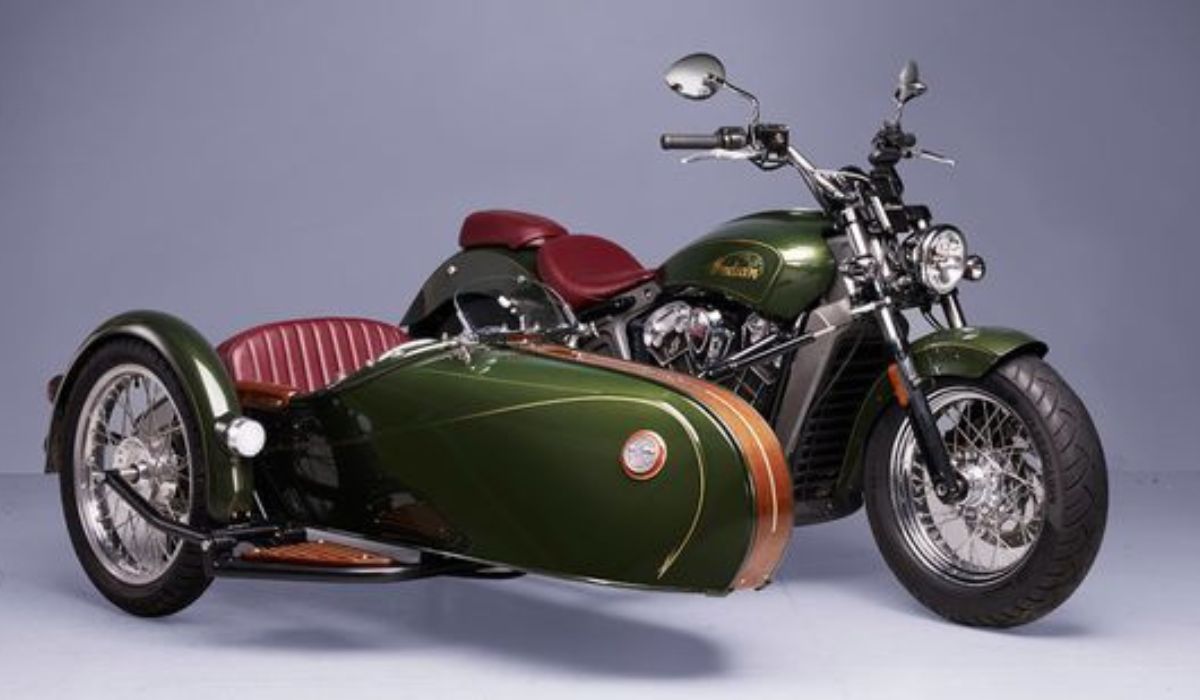For decades, the motorcycle with a sidecar has been an emblem of adventurous spirit, combining the thrill of riding with a touch of old-world beauty. This unconventional car layout is a perfect example of modern utility and good looks. In this post, we will examine the origins, functionality, and lasting attraction of motorcycle sidecars.
Historical Roots: Tracing the Origins
Sidecars for motorcycles first appeared in the early 20th century. Sidecars, which were originally developed to carry passengers or cargo, were widely used by civilians and military personnel alike throughout World War I and World War II. Because of their dependability, portability, and extra room, they were used for many different purposes.
Design and Construction: The Anatomy of a Sidecar
A sidecar for a motorbike is an additional wheeled unit that attaches to the side of the motorcycle. The steel or aluminum structure holds a canopies over the passenger seats providing protection from the elements. Some types of sidecars even have storage space, making them rather practical.
Practical Applications: Versatility Unveiled
Sidecars can be used in a variety of contexts. These vehicles serve a wide range of purposes, from pleasant family outings to professional uses like package delivery and medical transport, and even to competitive sidecar racing. They are a great benefit to the intrepid traveler because of their reliability and the extra room they provide for transporting things like dogs, groceries, and camping equipment.
Riding Experience: A Blend of Thrill and Stability
It’s not like anything else to ride a motorcycle when attached to a sidecar. These motorcycles call for a different style of riding than the norm. The rider must learn to navigate corners with precision and maintain a stable center of gravity in order to maintain control of the vehicle at all times. Those riding shotgun in the sidecar get to experience the broad road from a new angle.
Modern Innovations: Adapting to Contemporary Trends
Sidecars are associated with the past, yet their design and functionality have evolved over time. The suspension systems, aerodynamics, and safety features of modern vehicles have all been upgraded. Some producers have managed to combine modern conveniences like audio systems, heating, and networking choices into their traditionally designed products.
Future Obstacles and Thoughts for Planning
Having a sidecar attached to your motorcycle has its own set of issues. It takes practice to get the hang of the changes in handling from a regular motorcycle, navigating traffic, and parking. In addition, there may be difficulties with upkeep and locating specialized mechanics in areas where sidecars are less frequent.
The Classic Appeal: A Seventh Key to Lasting Beauty
Despite the difficulties, motorcycles with sidecars continue to be appealing. Sidecar riders enjoy the spotlight, the sense of community among their peers, and the nostalgic thrill of a ride. The blend of functionality, style, and the sense of adventure continues to attract a devoted following of riders and enthusiasts.
Conclusion: A Timeless Icon of Adventure
The motorcycle with a sidecar represents continuity and change in a world where transportation is constantly developing. Sidecars have been a part of motorcycle culture for decades, and they continue to pique the interest of risk-takers and gearheads thanks to their rich history, usefulness, one-of-a-kind riding experience, and ever-evolving design. Even when the passage of time leaves its permanent stamp on the roadways, the sight of a motorbike pulled by a sidecar never fails to evoke a sense of timeless nostalgia and excitement.
Also Read: Protect Your Ride with GEICO Motorcycle Insurance: Coverage Options and Benefits.
FAQs
What is a motorcycle sidecar?
Attaching a sidecar, normally a single-wheeled attachment, to the side of a motorcycle creates a three-wheeled vehicle configuration known as a motorcycle sidecar. It generates a one-of-a-kind vehicle layout that can improve passenger capacity, cargo capacity, or both.
Are sidecars stable and safe to ride?
Sidecars can be secure and safe if they are mounted and operated properly. Due to the extra wheel, they’re more stable and offer a unique riding experience. However, there is a learning curve for users of motorcycles with sidecars, as the controls are different from those of a regular two-wheeled bike.
To what end are motorcycle sidecars typically put?
The uses for a motorcycle sidecar are numerous. They have served a variety of purposes, including transport, warfare, and racing, throughout history. At the moment, they serve as an alternative for commercial and delivery purposes as well as for amusement rides and the transportation of persons, pets, and commodities
Can the performance of a motorbike be affected by adding a sidecar?
Yes, adding a sidecar alters the motorcycle’s performance. The vehicle’s dynamics, center of gravity, and turning characteristics are all altered. Riders will need to make some adjustments to their technique to deal with these new conditions. The engine of your motorcycle may feel more strain if you add extra weight.
Is there anything up-to-date about a sidecar?
Although updated suspension systems, increased aerodynamic efficiency, and other safety features are not uncommon in today’s sidecars, they nonetheless keep a traditional appearance. Some even have built-in stereos, heaters, and USB ports so you can connect your electrical gadgets.











